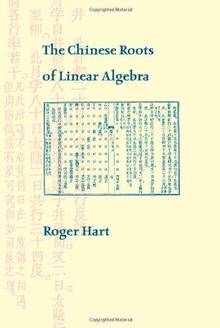The Chinese Roots of Linear Algebra
Hart, Roger
Éditeur : JOHNS HOPKINS
ISBN papier: 9780801897559
Parution : 2011
Code produit : 1135918
Catégorisation :
Livres /
Science /
Mathématique /
Mathématiques
Formats disponibles
| Format | Qté. disp. | Prix* | Commander |
|---|---|---|---|
| Livre papier | En rupture de stock** |
Prix membre : 69,08 $ Prix non-membre : 74,28 $ |
*Les prix sont en dollars canadien. Taxes et frais de livraison en sus.
**Ce produits est en rupture de stock mais sera expédié dès qu'ils sera disponible.
Description
A monumental accomplishment in the history of non-Western mathematics, The Chinese Roots of Linear Algebra explains the fundamentally visual way Chinese mathematicians understood and solved mathematical problems. It argues convincingly that what the West "discovered" in the sixteenth and seventeenth centuries had already been known to the Chinese for 1,000 years. Accomplished historian and Chinese-language scholar Roger Hart examines Nine Chapters of Mathematical Arts -- the classic ancient Chinese mathematics text -- and the arcane art of fangcheng, one of the most significant branches of mathematics in Imperial China. Practiced between the first and seventeenth centuries by anonymous and most likely illiterate adepts, fangcheng involves manipulating counting rods on a counting board. It is essentially equivalent to the solution of systems of N equations in N unknowns in modern algebra, and its practice, Hart reveals, was visual and algorithmic. Fangcheng practitioners viewed problems in two dimensions as an array of numbers across counting boards. By "cross multiplying" these, they derived solutions of systems of linear equations that are not found in ancient Greek or early European mathematics. Doing so within a column equates to Gaussian elimination, while the same operation among individual entries produces determinantal-style solutions. Mathematicians and historians of mathematics and science will find in The Chinese Roots of Linear Algebra new ways to conceptualize the intellectual development of linear algebra.























